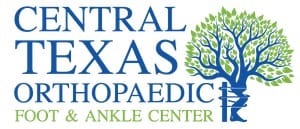Common Diagnoses:
Corns/Calluses
Corns/Calluses Overview
Corns and calluses are thick, hardened layers of skin that develop when your skin tries to protect itself against friction and pressure. They most often develop on the feet and toes or hands and fingers. Corns and calluses can be unsightly.
Corns/Calluses Symptoms
You may have a corn or a callus if you notice:
- A thick, rough area of skin
- A hardened, raised bump
- Tenderness or pain under your skin
- Flaky, dry or waxy skin
Corns/Calluses Diagnosis
Your doctor will examine your feet and rule out other causes of thickened skin, such as warts and cysts. He or she may recommend an X-ray if a physical abnormality is causing the corn or callus.
Corns/Calluses Treatment
Treatment for corns and calluses usually involves avoiding the repetitive actions that caused them to develop. You can help resolve them by wearing properly fitting shoes, using protective pads and taking other self-care measures.
If a corn or callus persists or becomes painful despite your self-care efforts, medical treatments can provide relief:
Trimming away excess skin. Your doctor can pare down thickened skin or trim a large corn with a scalpel, usually during an office visit. Don’t try this yourself because it could lead to an infection.
Callus-removing medication. Your doctor may also apply a patch containing 40 percent salicylic acid (Clear Away, MediPlast,others). Such patches are available without a prescription. Your doctor will let you know how often you need to replace this patch. He or she may recommend that you use a pumice stone, nail file or emery board to smooth away dead skin before applying a new patch. You can also get a prescription for salicylic acid in gel form to apply on larger areas.
Shoe inserts. If you have an underlying foot deformity, your doctor may prescribe custom-made padded shoe inserts (orthotics) to prevent recurring corns or calluses.
Surgery. In rare instances, your doctor may recommend surgery to correct the alignment of a bone causing friction.

